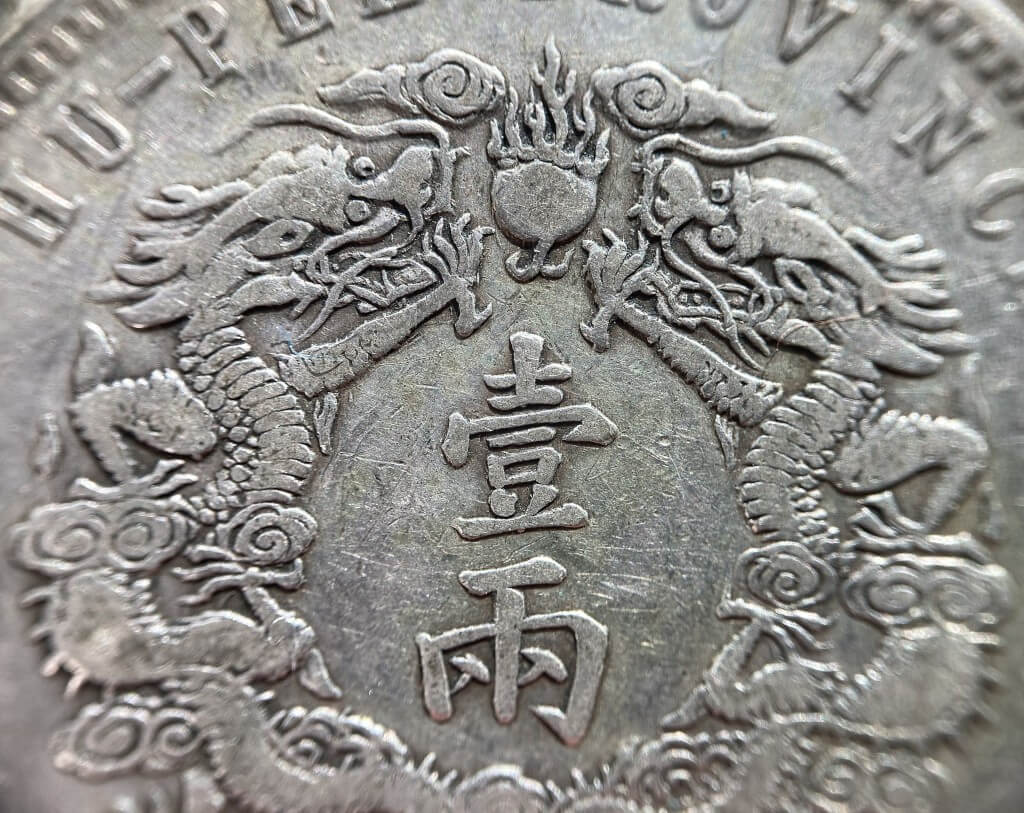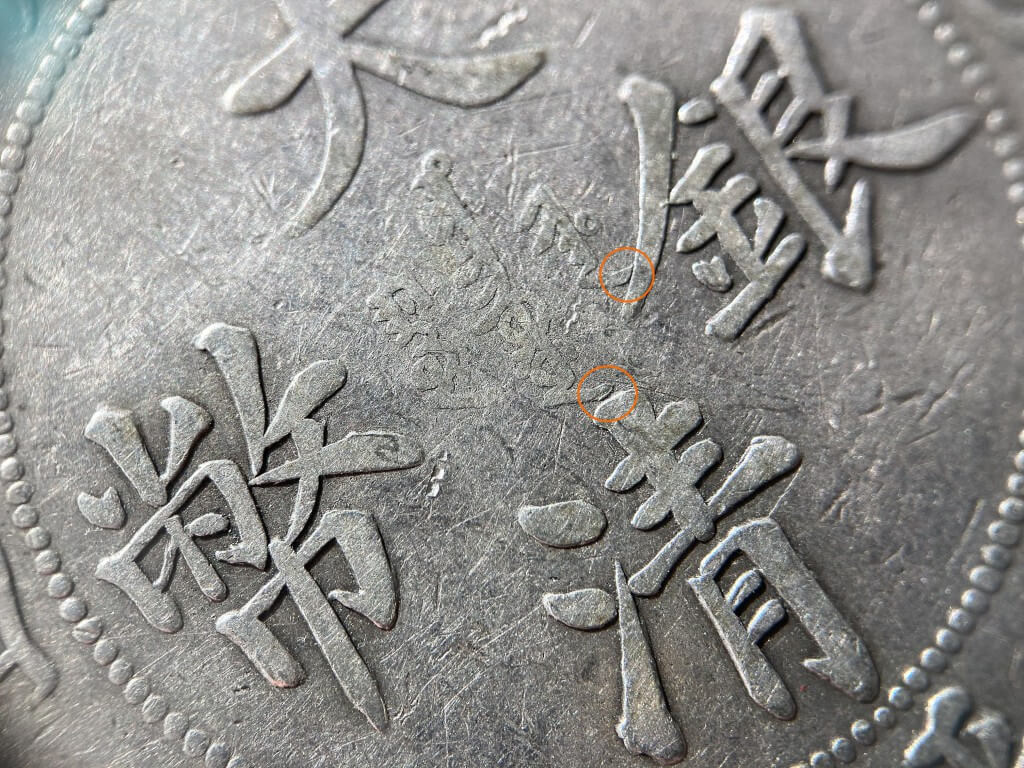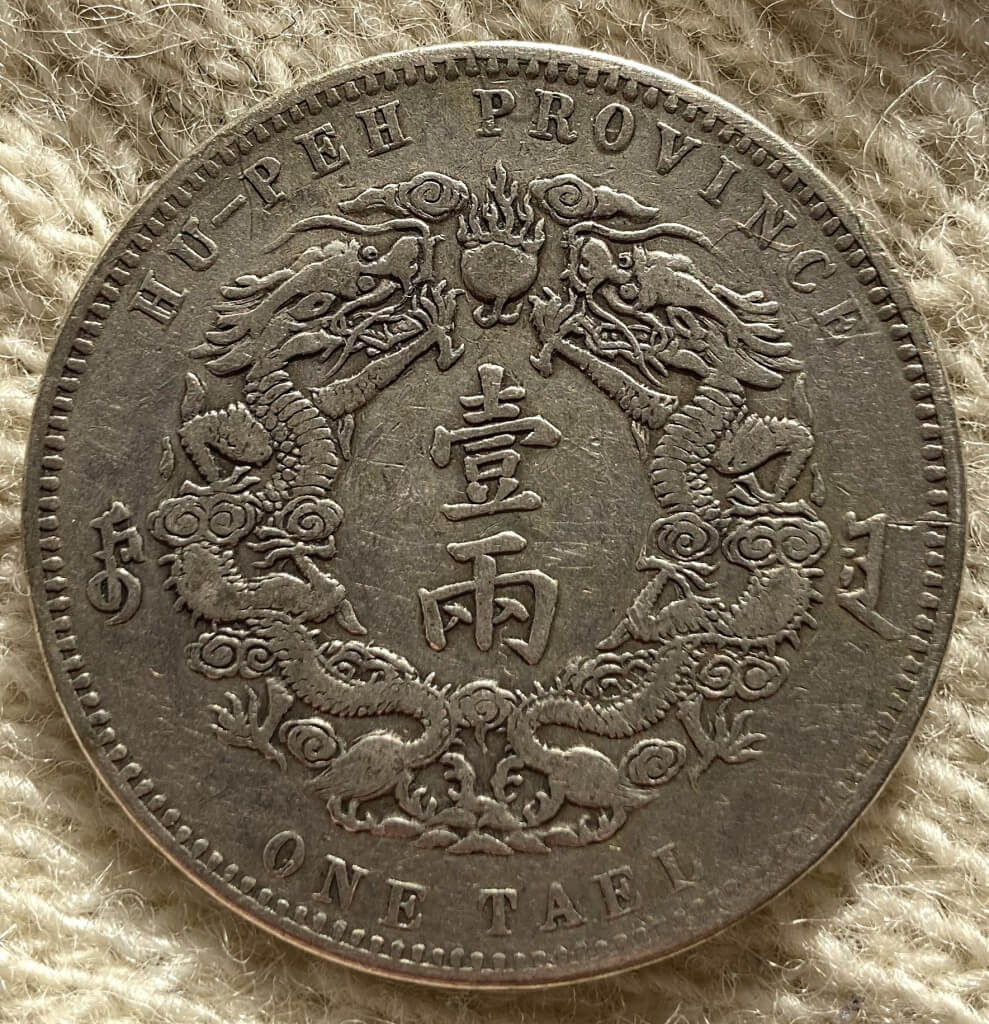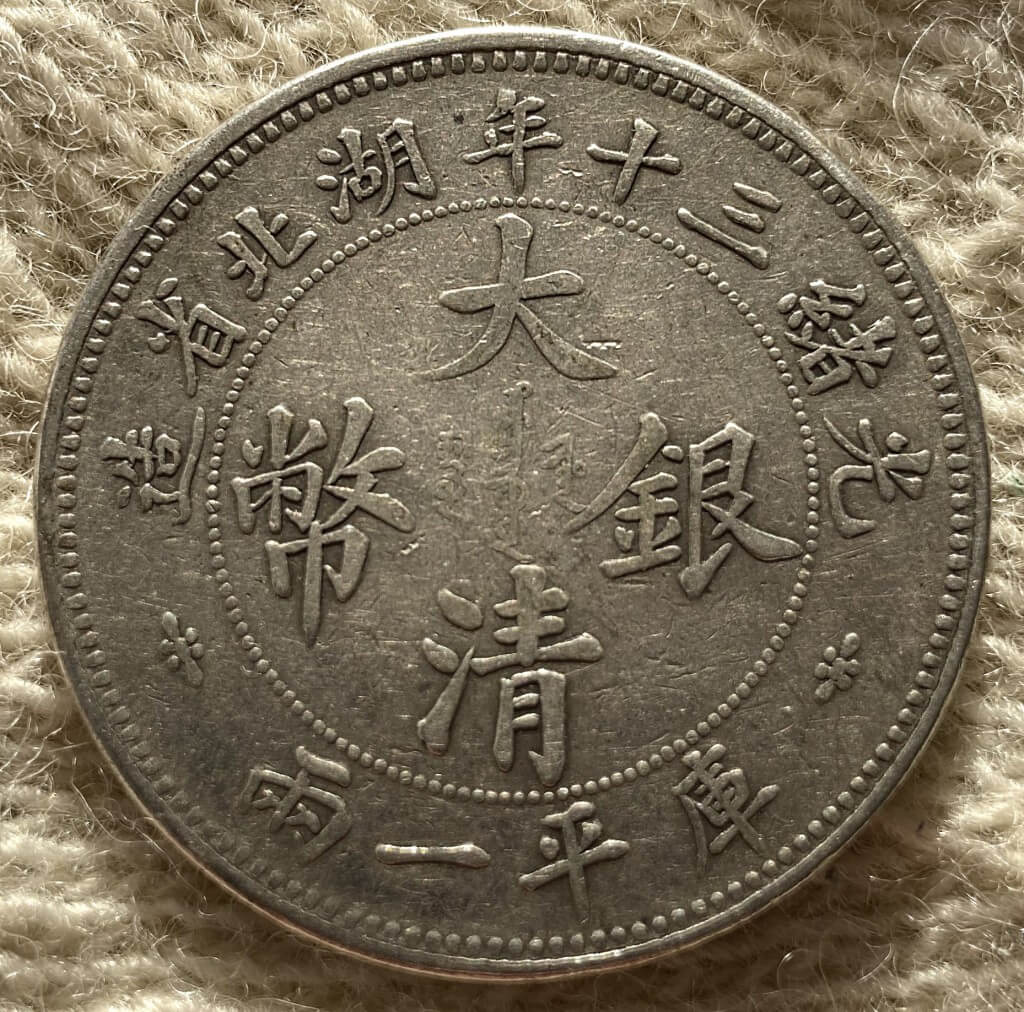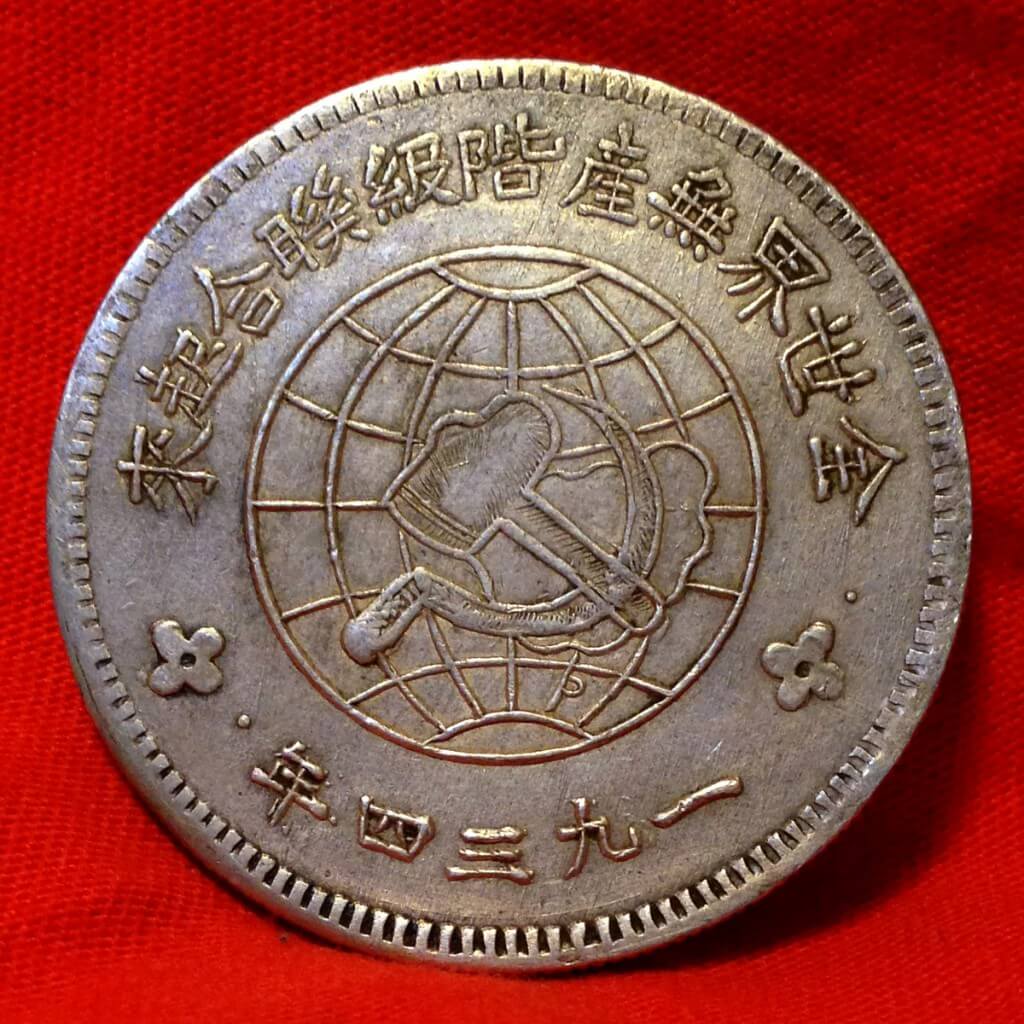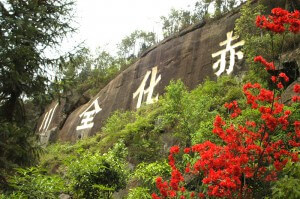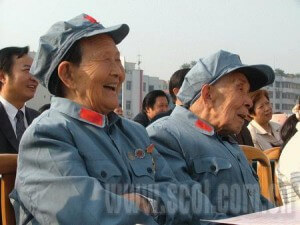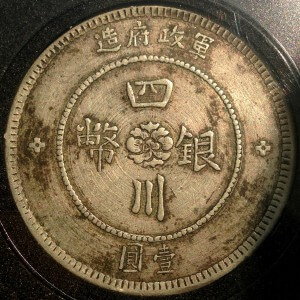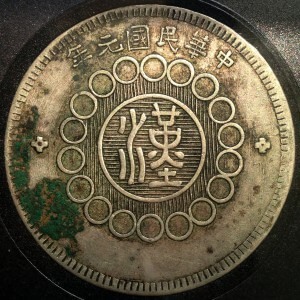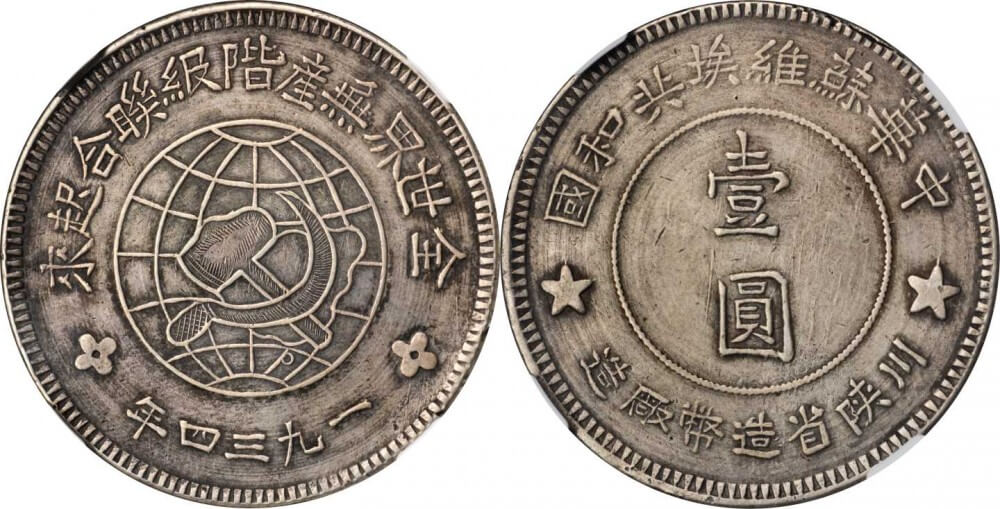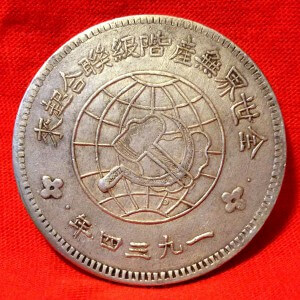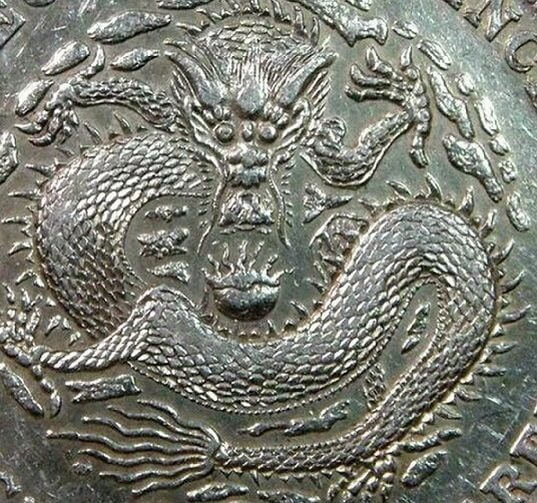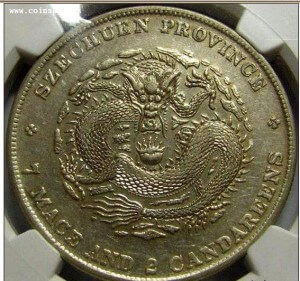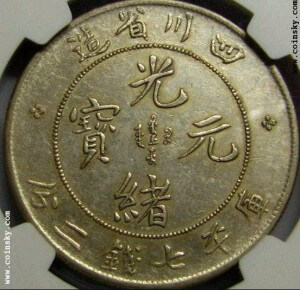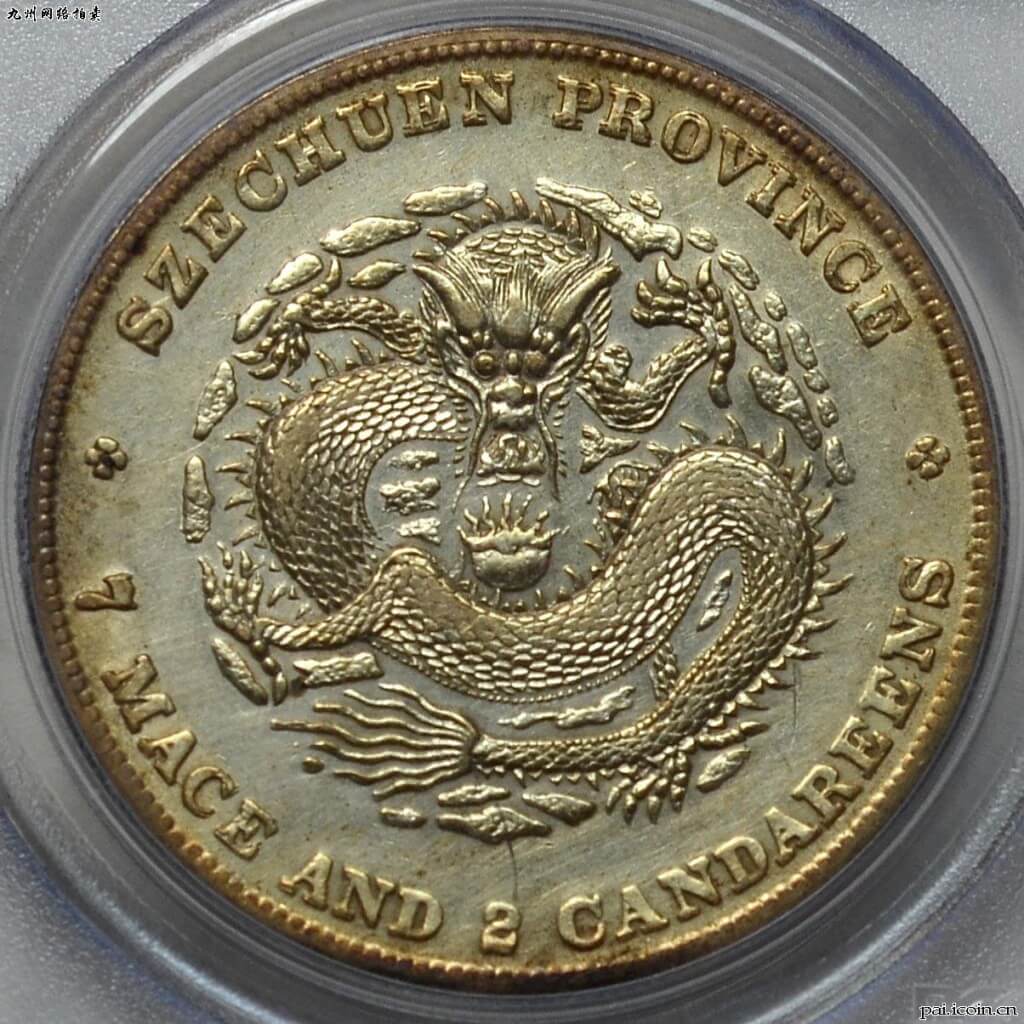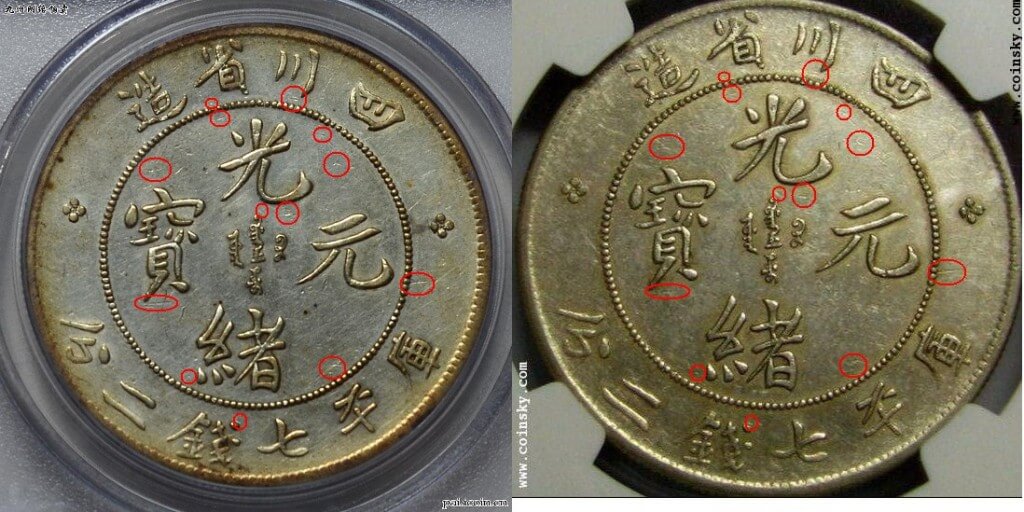A reader from France recently sent me pictures of this Chinese silver coin with beautiful double dragons on the obverse. I was astonished: usually, this kind of coins is only seen in large auctions and I never had someone contacting me about a genuine one. Not only this coin was obviously genuine, but it was the better, very rare Large Characters variety:
As you can see, on the Large Characters variety the manchu script at the center of the coin is connected to the surrounding Chinese characters in two different places. On the more common Small Characters variety, the characters don’t connect.
The 1904 Hupeh tael, whichever variety, is always a rare coin. It only circulated for one month before being scrapped, and only 648,000 were minted in the first place. It is impossible to know how many survived, but there is only 224 coins graded by PCGS to this day, of which only 25 with the “Large Characters” variety. On June 25, Heritage Auctions sold a perfect one for $360,000 USD in Hong Kong.
The strangest thing about my reader’s coin is the circulation wear:
Most of the surviving 1904 Hupeh Tael are in high grade because they were thesaurized as high denomination coins and left untouched. It seems this one somehow escaped the Hupeh province and circulated elsewhere, likely for its weight in silver ?
PCGS certified this coin VF30: this is the lowest grade for this type, but a privilege to even hold it in one’s hand. Only two dozens are known to exist in the world right now, and it is a very rare pleasure indeed to help add one to the census !
In Winter 1932 the Fourth Front Army of the Chinese Workers’ and Peasants’ Red Army, mostly composed of survivors of the Nanchang Uprising and armed peasants from the Hunan province, escaped Chiang Kai-Shek’s siege of the Hupeh/Honan/Anhwei revolutionary base and entered northern Sichuan across Mt. Bashan. By early 1933, the Red Army controlled a 15,000 square kilometers area centered around the cities of Bazhong, Guangyuan and Nanchong, populated by over one million souls.
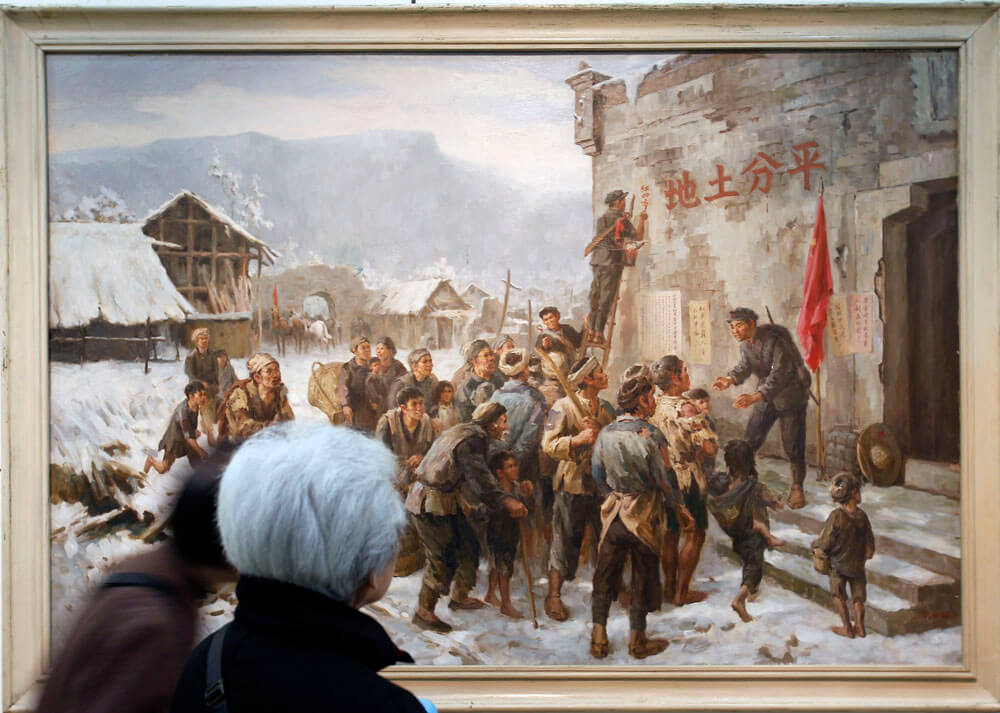
A 92-year-old woman looks at “The Red Army enters Northern Sichuan”, a 1957 painting from LIU Guoshu
Eighty years later, I was sipping tea in Nanchong while listening to my friend YI Chuanbi – his pet iguana perched on his shoulder – telling me of an old man he knew who had a perfectly preserved Szechuan-Shensi Soviet dollar and (for the right price) would be amenable to sell. Chinese soviet dollars are the thing of legend: their rarity and historical significance caused them to be highly sought after by collectors very early on. A Chinese Soviet dollar in uncirculated condition was already worth 1,000 yuan in the early 1980s, when YI was selling Szechuan dragon dollars 8 yuan apiece to buy games for his video game arcade business. Since then those prices have risen 20,000%, a performance comparable to AAPL shares during the same period!
Soviet dollars are in a class apart from other Chinese coins: they are revolutionary relics, just like the stone-carved slogans that the Fourth Army left in the Szechuan province. For many older Sichuan men and women, they are a direct connection to the heady days of their youth.
The Szechuan-Shensi Soviet dollar was struck in 1934 with hand-crafted dies at the Red Army Mint built in the Wangcang county (旺苍县) of Guangyuan (广元市), and were as much an instrument of propaganda as an instrument of payment. That politically charged currency, stamped with the symbol of the hammer and sickle spreading all over China and surrounded by the famous rallying cry “proletariats of the world, unite!“, was obviously banned and very dangerous to own in the territories controlled by the KMT or the Sichuan clique. For use in enemy territory, the Red Army Mint issued counterfeit Szechuan Military Government dollars instead. These fake coins, made with great care but with the same crude techniques used to produce the Soviet dollars, are easily identified by their hand-carved security edge and the concentric grooves on their surfaces.
(the Red Army version of the Szechuan 1912 Military dollar is worth $3,000 to $5,000 USD in XF condition)
Most of these Red Szechuan Military dollars and Soviet coins were melted down into less dangerous shapes after the Fourth Army retreated in March 1935 to join the Long March and the nationalist forces regained control of the area. The few remaining coins were often kept hidden, either due to the risk they posed to their owners, or out of the old-fashioned concern that the fewer people know of your valuable possessions, the better!
This combination of high desirability and elusiveness created ideal conditions for modern counterfeiters. Until smartphones with good camera became ubiquitous in China, very few collectors had access to anything better than low resolution pictures of genuine Soviet dollars, and even fewer had the opportunity to examine one “hands-on”.
Even for collectors with deep pockets, it is therefore difficult to find a Soviet dollar both in excellent condition and with a respectable pedigree, made crucial by the large number of very high quality fake coins circulating on the market. You can now better imagine my excitation when YI Chuanbi first told me of this opportunity!
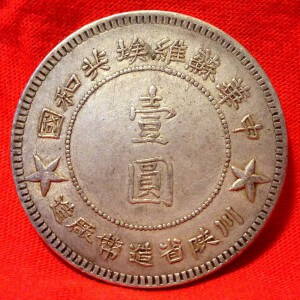
Szechuan-Shensi Soviet 1934 dollar (Kann 808 – Y-513 – L&M 891) (reverse) (graded AU55 by NGC)
In the end I did not succeed in buying that old man’s Soviet dollar in 2012, but after three years I finally managed to catch another one, pictured above. This Szechuan-Shensi Soviet dollar was circulated but is exceptionally well-preserved, with softly lustrous surfaces. More importantly, it has an unimpeachable pedigree: it is the plate coin for the “Crab pincer” variety (CSSB-Y2-4-02) in 《川陕革命根据地货币图录》, one of the most detailed books on the money of communist China.
It is a strange feeling to look at this heavy coin in the palm of my hand and think of the courageous men and women who carefully engraved dies and minted coins eighty years ago, doing their best despite the hardships and terrible conditions, with the hope of somehow contributing to change the world. Chinese Soviet dollars are truly a class apart.
A good friend from Hangzhou recently contacted me regarding a Chinese coin he was interested in purchasing. It was a beautiful but rather expensive Szechuan coin (¥100,000 RMB or about $16,400 USD at the time of writing), and he was unsure about the deal.
The Szechuan dollar my friend was considering to buy was a high grade sample of the rare “库 not connected” variety (四川光绪剑毛龙无头车). It had sharp details and was graded AU50 by NGC, however the coin had clearly been cleaned and my friend hoped for a discount.
I browsed past sales results when I was struck by the similitude between the coin my friend coveted and a Szechuen dollar sold at the Jiuzhou 2012 Summer Auction (九州2012夏季机制币、纸币拍卖专场). At first, I thought that the coin graded XF details by PCGS had been re-submitted to NGC in a bid for a more favorable grade, but I quickly verified that the coins’ obverse were distinct.
While carefully examining the reverse, I was troubled to find an identical scratch below the right side rosette. Despite the low resolution of the pictures sent by my friend, it was obvious this ought to be a circulation mark. Two coins of the same type often exhibit wear or weak strike in the same place, but identical circulation marks should never be observed: it would indeed imply both coins were randomly damaged in the exact same fashion while being handled by countless men and women through a century!
The scratches I highlighted on the picture above were damning evidences that both coins were very high level forgeries. The counterfeiters went to the trouble of striking different obverses, but were surprisingly lazy etching the same marks on the reverse. The replica is still stunning, and actually fooled two world-class grading agencies and the highly experienced Chinese coins collectors who bought them. It is especially troubling that without the inexplicable laziness of the counterfeiters, and a stroke of luck comparing pictures on the Internet, both fake coins would have most likely stayed undetected.
Once again, I will urge my dear readers to listen to their instinct when buying: if you are somehow hesitant about a deal, like my friend was, the best decision is often to walk away. It is also best to avoid buying cleaned or polished coins altogether, especially in high grade, as it is too convenient a camouflage for artificial aging.
